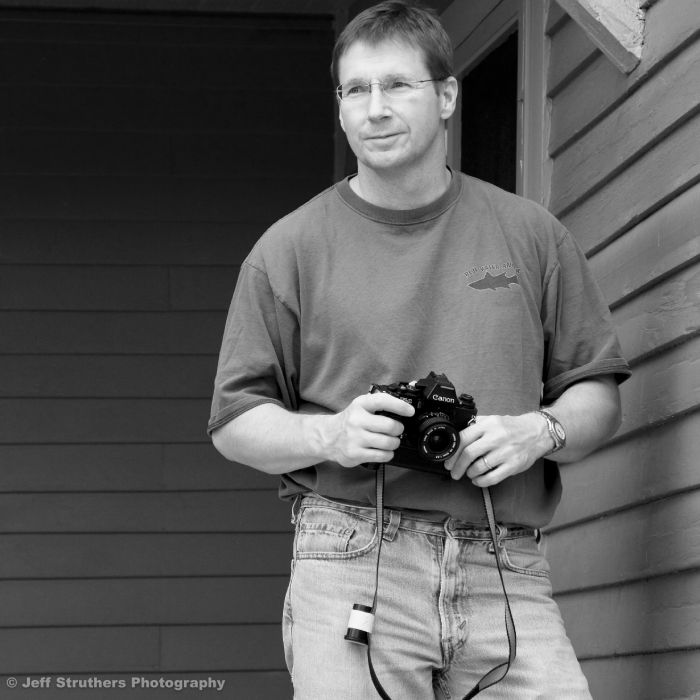About Jeff Struthers
I am a professional freelance photographer dedicated to applying advanced technical aspects of capture, lighting, postproduction, and printing to compelling visual compositions (pictures). I work to balance aesthetic appeal with science (artist + geek). Mindful that subject and composition are paramount, I also realize the importance of confidently twisting cameras, lenses, and lights into whatever configuration is needed to ultimately “render as visualized.” This is the long way of saying I like photography, and I like to use all the dials, buttons, and controls on the equipment to make photographs.

I can’t define a personal style or genre. However, considering that most of my favorite photographs were taken by Hass, Eggleston, and Herzog, I guess I am biased toward urban photography. Not getting locked into a style keeps photography fresh and interesting. It comes down to a fascination with light, whether I find it or make it.
Many of my favorite images involve repeatedly returning to a scene to make the image “a little better.” Failed attempts over weeks, months, and years to be in the right place at the right time often pass before I finally see the fleeting combination of perfect light, dramatic weather, and a cooperative subject. Other images in my galleries were illuminated with strobes, reflectors, gobos, barn doors, and snoots, allowing me to bring out form and texture hidden from natural light. In some instances, rare natural events were combined with a bit of illumination from a well-placed strobe to create a dramatic photo (see Abandoned Car & Fiery Sky). I’ve employed meticulously placed strobes to light up the 650-pound movements of a historic clock, an old sleigh in the dark corner of an abandoned barn, and vintage tractors hidden in ice fog. Tilt and shift lenses are regularly required for architectural photography or to get the hyper depth-of-field in landscape photos.
My interest in photography began in 1974 when my mom purchased a Yashica 35GS camera for me from the Woolco department store in DeKalb, Illinois, a darkroom a few months later, and then a set of Time-Life photography books. It would be nice to say something deeply philosophical like “she realized a creative potential in me and wanted to give me an avenue to support it,” but the truth is she just hoped it would keep me out of trouble. When I was 17, I joined the yearbook staff and was voted best high school photographer in the nation by the American Newspaper Publishers Association’s Quill and Scroll organization. My attendance records back then prove that school was not a huge priority of mine, so receiving any academic award was certainly not what anyone would have predicted. Decades and a zillion dollars of equipment later, I still like to take pictures.